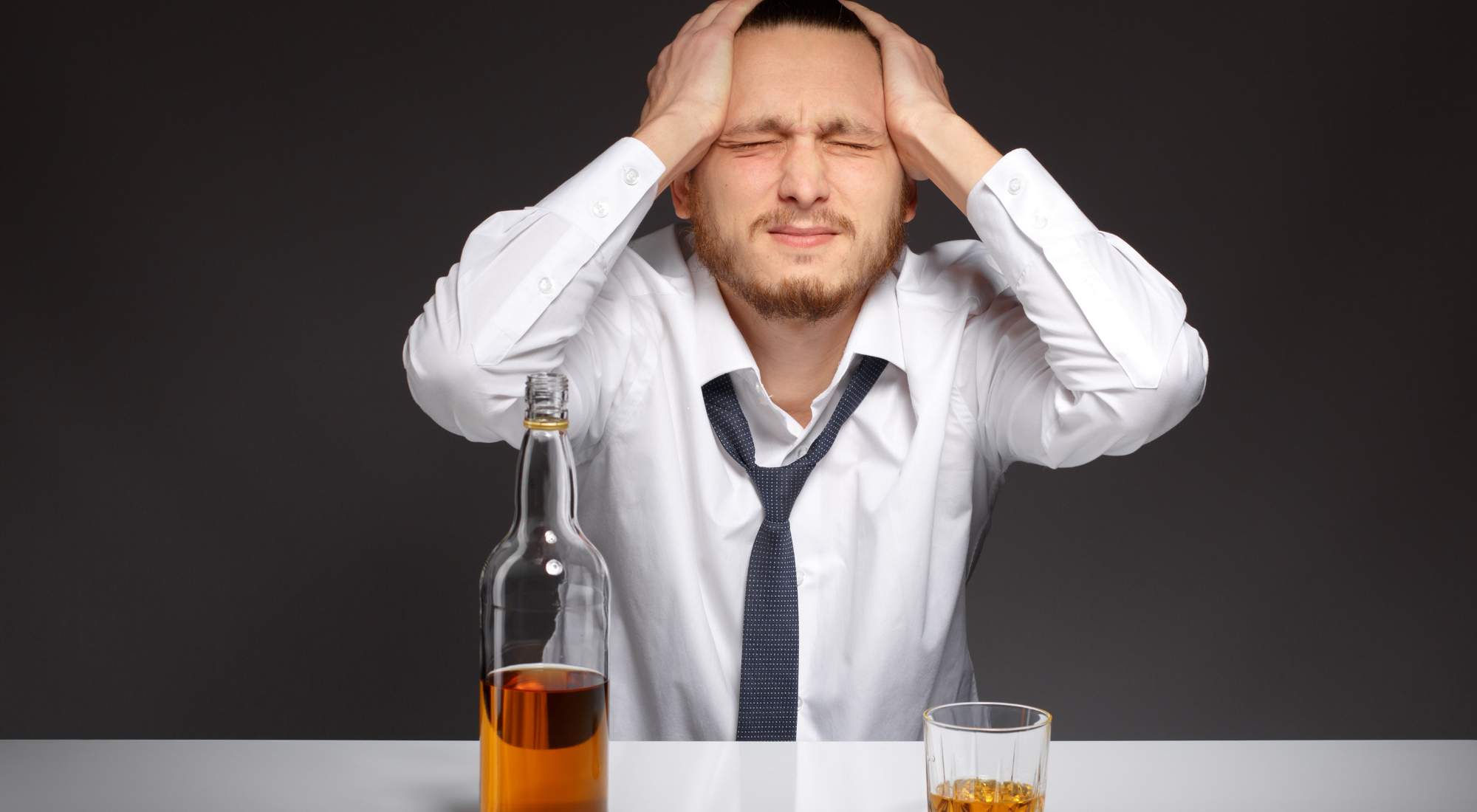Medications to Help Stop Drinking
April 17, 2024
Discover medications to help stop drinking and power your journey towards sobriety. Learn about their effectiveness and considerations.
Medications for Alcohol Use Disorder
Alcohol use disorder (AUD) is a chronic condition that can have significant impacts on an individual's health and well-being. Fortunately, there are medications available that can aid in the process of stopping or reducing alcohol consumption. In this section, we will explore the understanding of alcohol use disorder and the types of medications available for its treatment.

Understanding Alcohol Use Disorder
Alcohol use disorder is a condition characterized by the inability to control or stop drinking despite adverse consequences. It is a chronic brain disease that affects both physical and mental health. AUD can lead to various problems, including liver disease, cardiovascular issues, and mental health disorders. It is important to seek appropriate treatment and support for individuals with AUD.
Types of Medications Available
Several medications have been approved by the U.S. Food and Drug Administration (FDA) to treat alcohol use disorder. These medications work in different ways to help individuals who want to stop drinking or reduce their alcohol consumption. The FDA-approved medications for AUD include:
- Disulfiram: Disulfiram, commonly known by the brand name Antabuse, works by changing the way the body breaks down alcohol. When taken, it causes unpleasant reactions (such as nausea, flushing, and headache) if alcohol is consumed. This aversive effect serves as a deterrent to drinking alcohol.
- Naltrexone: Naltrexone is available in pill form for AUD and as an extended-release injectable for both AUD and opioid use disorder (OUD). It works by blocking the pleasurable effects of alcohol, reducing cravings, and decreasing the desire to drink. Naltrexone is approved by the FDA for the treatment of both AUD and OUD.
- Acamprosate: Acamprosate, also known as Campral, helps individuals with AUD by reducing alcohol cravings. It is thought to stabilize the chemical balance in the brain that is disrupted by long-term alcohol use. Acamprosate is typically used in combination with counseling and psychosocial support.
These medications have shown efficacy in reducing alcohol consumption and improving treatment outcomes. It is important to note that the effects of these medications may vary from person to person, and individualized treatment plans should be developed in consultation with healthcare professionals.
In addition to these FDA-approved medications, there are also other medications that have shown promise in reducing heavy alcohol use, although they may be used off-label. It is essential to consult with a healthcare provider to determine the most suitable medication and treatment plan for an individual's specific needs.
Understanding the available medications for alcohol use disorder is the first step towards finding an effective treatment approach. These medications, when combined with counseling and psychosocial support, can play a crucial role in helping individuals break free from the cycle of alcohol dependence and embark on a path to recovery.
Disulfiram: The Antabuse Approach
Disulfiram, commonly known by the brand name Antabuse, is the first FDA-approved medication for the treatment of alcohol dependence syndrome [5]. This medication works by interfering with the way the body metabolizes alcohol, leading to unpleasant symptoms when alcohol is consumed.
Mechanism of Action
The mechanism of action of disulfiram involves inhibiting the enzyme aldehyde dehydrogenase in the body, which leads to an increase in the plasma acetaldehyde concentration. When alcohol is consumed while taking disulfiram, it blocks the breakdown of acetaldehyde, resulting in a buildup of this toxic compound. This buildup causes unpleasant symptoms such as flushing, nausea, and vomiting. The goal of disulfiram treatment is to create a negative association with alcohol by making individuals feel sick when they drink.
Effectiveness and Considerations
Disulfiram has been shown to be effective in helping individuals with alcohol use disorder (AUD) maintain sobriety when used as part of a comprehensive treatment plan. The effectiveness of disulfiram is highest when used under supervised conditions, ensuring patient cooperation [5]. It is important to note that disulfiram does not treat alcohol withdrawal symptoms and should only be used after the individual has stopped drinking and detoxification has occurred.
When considering disulfiram as a treatment option, it is essential to take into account certain considerations. For example, individuals must be motivated and willing to abstain from alcohol. The aversive effects of disulfiram can serve as a deterrent, but it requires the individual's commitment to maintaining sobriety. It is vital to discuss potential side effects and potential drug interactions with a healthcare professional before starting disulfiram treatment. Additionally, regular monitoring and follow-up appointments with a healthcare provider are recommended to assess the effectiveness of the treatment and address any concerns that may arise.
Disulfiram offers a unique approach to treating alcohol use disorder by creating a negative association with alcohol consumption. When used as part of a comprehensive treatment plan, it can be a valuable tool in supporting individuals on their journey to sobriety. However, it is important to work closely with a healthcare professional to determine if disulfiram is the right choice and to ensure its safe and effective use.
Naltrexone: Blocking Alcohol's Pleasurable Effects
Naltrexone is a medication that is used to help individuals with alcohol use disorder (AUD) in their journey towards sobriety. It works by blocking the parts of the brain that make you feel pleasure and intoxication when alcohol is consumed, leading to a reduced need to drink. This medication is approved by the Food and Drug Administration (FDA) for the treatment of both opioid use disorder (OUD) and AUD [2].
How Naltrexone Works
Naltrexone is classified as an opioid antagonist. It blocks the opioid receptors in the brain, preventing the pleasurable effects of alcohol consumption. By doing so, it reduces the desire to drink and helps individuals maintain sobriety. Naltrexone is not addictive and does not cause withdrawal symptoms when its use is stopped.
Alcohol ingestion stimulates the release of endogenous opioids and increases dopamine transmission, which contributes to the pleasurable effects of alcohol. Naltrexone blocks these effects, reducing euphoria and cravings. A Cochrane review consisting of 50 randomized trials and 7,793 patients found that oral naltrexone decreased heavy drinking (NNT = 10) and slightly decreased daily drinking (NNT = 25). It also resulted in a reduction in the number of heavy drinking days and the amount of alcohol consumed.
Treatment Duration and Administration
The duration of naltrexone treatment for AUD typically lasts for three to four months [2]. It is available in pill form for AUD and as an extended-release injectable for both AUD and OUD. The injectable form provides a longer-acting option that can help maintain sobriety over an extended period of time.
To ensure the effectiveness of naltrexone treatment, it is recommended to start the medication after a period of abstinence from alcohol. This allows the individual to establish a sober foundation before using naltrexone to further support their recovery journey. The opioid receptor system plays a significant role in mediating the pleasurable effects of alcohol, and naltrexone works by blocking these effects. Therefore, it is more successful in individuals who are already abstinent from alcohol when starting the medication.
As with any medication, it is important to follow the prescribed dosage and adhere to the treatment plan recommended by your healthcare provider. Naltrexone should be used as part of a comprehensive treatment approach that may include counseling, support groups, and other interventions to address the underlying causes and triggers of alcohol use disorder.
Naltrexone, with its ability to block alcohol's pleasurable effects, provides a valuable tool in the journey towards overcoming alcohol use disorder. It helps individuals reduce their cravings and maintain sobriety, offering hope and support on the path to recovery.
Acamprosate: Combating Alcohol Cravings
Acamprosate is a medication that has been used since 1989 for the treatment of Alcohol Use Disorder (AUD). It is considered a well-tolerated and relatively safe drug. Acamprosate works by modulating glutamatergic transmission, specifically by affecting N-methyl-D-aspartic acid (NMDA) and metabotropic glutamate-5 receptors. This mechanism helps reduce alcohol cravings and unpleasant withdrawal symptoms associated with AUD.
Action Mechanism of Acamprosate
The exact mechanism of action of acamprosate is still not fully understood, but it is believed to interact with glutamate at the N-methyl-D-aspartate (NMDA) receptor. By modulating glutamate transmission, acamprosate helps restore the balance in the brain disrupted by chronic alcohol use. This action reduces the craving for alcohol and aids in maintaining abstinence.
Dosage Regimen and Side Effects
Acamprosate is typically prescribed as a tablet to be taken orally. The standard dosage is 666 mg (two tablets) three times a day, totaling 1,998 mg daily. It is important to follow the recommended dosage and frequency as prescribed by a healthcare professional.
When it comes to side effects, acamprosate is generally well-tolerated. The most common side effects reported include diarrhea, nausea, and abdominal pain. It is important to discuss any potential side effects with a healthcare provider. It is worth noting that acamprosate is most effective for individuals who are not currently drinking alcohol [3].
As with any medication, it is important to consult with a healthcare professional before starting acamprosate or any other medication for the treatment of Alcohol Use Disorder. They can provide guidance on the appropriate dosage and monitor any potential interactions or side effects.
Acamprosate, along with other medications such as disulfiram and naltrexone, can be an effective tool in the treatment of Alcohol Use Disorder when used in combination with counseling interventions. It is important to remember that medication alone does not provide a cure for Alcohol Use Disorder. It is best used as part of a comprehensive treatment program that includes counseling and support. Working closely with healthcare professionals can help individuals achieve better treatment outcomes and support their journey towards recovery.
Additional Medications for Alcohol Use Disorder
In addition to the FDA-approved medications, there are other medications that have shown promise in helping individuals with Alcohol Use Disorder (AUD) reduce alcohol consumption and cravings. These medications are often prescribed off-label and may be used in combination with counseling interventions to further improve treatment outcomes.
Off-Label Medications
Two off-label medications that have demonstrated potential in the treatment of AUD are gabapentin and topiramate. While these medications are not specifically approved for this use, they have shown promising results in helping individuals avoid drinking, reduce alcohol consumption, and have fewer cravings.
Gabapentin and topiramate interact with the GABA and glutamate systems, which play a role in the brain's reward and pleasure pathways. By modulating these systems, these medications may help individuals with AUD in their efforts to overcome alcohol dependence [1].
Research and Effectiveness
A review conducted by the Agency for Healthcare Research and Quality (AHRQ) examined the evidence for pharmacologic treatment of AUD in outpatient settings. The review found moderate evidence to support the use of naltrexone and acamprosate, both FDA-approved medications. However, evidence was lacking for most other medications, including off-label use and those undergoing trials. There was some evidence for topiramate and valproic acid.
Acamprosate, an FDA-approved medication, appears to be most effective in maintaining abstinence in patients who are not currently drinking alcohol. It is thought to interact with glutamate at the N-methyl-D-aspartate receptor, although its exact mechanism is not fully understood. Systematic reviews have shown that acamprosate can reduce drinking and prevent a return to any drinking, with a number needed to treat (NNT) of 12 to prevent a return to any drinking.
Naltrexone, another FDA-approved medication, works as an opioid antagonist. It reduces alcohol consumption by blocking the pleasurable effects of alcohol. When used alongside counseling interventions, naltrexone has been shown to decrease heavy drinking and daily alcohol consumption. A Cochrane review found that oral naltrexone decreased heavy drinking and slightly reduced daily drinking, with an NNT of 10 to reduce heavy drinking and an NNT of 25 to reduce daily drinking. Injectable naltrexone showed promise, but more research is needed due to the small sample size.
While more research is needed to fully understand the effectiveness of off-label medications, they represent potential options for individuals with AUD who may not have found success with FDA-approved medications alone. It's important for individuals to work closely with their healthcare providers to determine the most appropriate medication treatment plan based on their individual needs and circumstances.
Integrating Medication with Psychotherapy
For individuals seeking treatment for alcohol use disorder, it is crucial to understand that medications alone may not be sufficient. Integrating medication with psychotherapy, also known as psychosocial treatments, is often recommended to address both the physical and mental aspects of the disease. This comprehensive approach can assist in behavior change, coping mechanisms, and provide the necessary support without relying solely on alcohol.
Importance of Psychosocial Treatments
Psychotherapy, or talk therapy, is considered the mainstay of treatment for alcoholism. It involves working with a trained therapist or counselor to address the underlying issues contributing to alcohol use disorder. By engaging in psychotherapy, individuals can gain insight into the factors that contribute to their alcohol use and develop strategies to manage cravings, triggers, and stressors.
Psychosocial treatments encompass a range of therapeutic approaches, including cognitive-behavioral therapy (CBT), motivational interviewing, and support groups such as Alcoholics Anonymous (AA). These treatments aim to empower individuals, provide them with coping skills, and foster a supportive environment for their recovery journey.
Combining Medication and Behavioral Therapies
To date, several medications have been approved by regulatory authorities like the U.S. Food and Drug Administration (FDA) and the European Medicines Agency (EMA) for the treatment of alcohol dependence syndrome, including acamprosate, disulfiram, naltrexone, and nalmefene. These medications have shown efficacy in helping individuals decrease alcohol intake and improve treatment outcomes when used in combination with counseling interventions.
Integrating medication with psychotherapy can enhance the effectiveness of both approaches. For example, cognitive-behavioral therapy (CBT) can be particularly beneficial when combined with medications for alcohol use disorder. CBT helps individuals identify and modify unhealthy thought patterns and behaviors related to alcohol use, while medications can assist in reducing cravings and maintaining abstinence.
Motivational interviewing, another commonly used psychotherapeutic approach, focuses on enhancing an individual's motivation to change their drinking behavior. When used alongside medication, motivational interviewing can help individuals explore their ambivalence about alcohol use and strengthen their commitment to recovery.
Support groups like Alcoholics Anonymous (AA) can offer a valuable source of community and peer support. Combining participation in support groups with medication treatment can provide individuals with a comprehensive support system that addresses both the psychological and physiological aspects of alcohol use disorder.
It is essential to consult with healthcare professionals specializing in addiction medicine or mental health to determine the most suitable combination of medication and psychotherapy for each individual. The integration of medication and psychotherapy can provide a comprehensive approach to treatment, offering individuals the tools and support they need to break free from alcohol use disorder and embark on their journey to recovery.
References
Learn About Clear Steps Recovery and How We Can Help You
Once you reach out to Clear Steps Recovery, your path becomes clear, and you can get the help and support you need to break the cycle of addiction. Our serene woodland environment promotes physical, mental, emotional, and spiritual healing.
Call today or contact us online to get started.
The Path Is Clear – Take Your First Steps Today with Clear Steps Recovery
With our team and your desire to heal, we can improve your quality of life and functional abilities, so you can get back to living your best life.
































.jpg)


















.jpg)
.jpg)















































